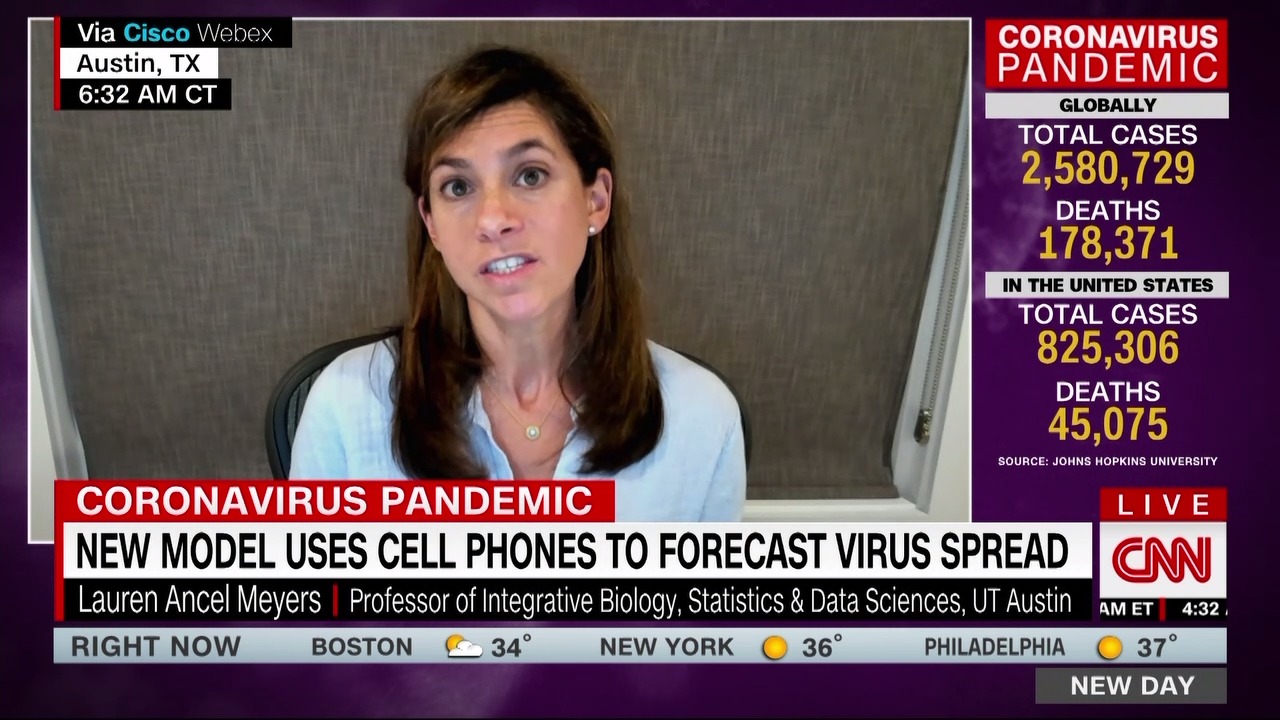[ad_1]

Data suggests that people have dramatically reduced their time in public places and are largely staying at home — but easing social distancing restrictions could change the forecast, according to researchers.
Lauren Ancel Meyers, who is leading researchers at the University of Texas-Austin, explained her team’s model with CNN’s Alisyn Camerota.
“We are using data from cell phones…of tens of millions of people that tell us actually on a daily basis how much time are people staying at home, how often are they ending up in grocery stores or in pharmacies or in other places where they could have contact that leads to disease transmission,” she said.
Ancel Meyers said that Americans are largely staying at home and away from common places, which is why deaths are not continuing to skyrocket.
“That is the secret to success. That is why we have seen a trailing off of mortality in this country. And that is why it’s going to be important going forward that we continue to take measures to prevent transmission by just keeping out of contact with each other or reducing the likelihood of transmission when we do have to come in contact with each other,” she said.
Ancel Meyers said her team’s model builds on the one from IHME, which is frequently cited by the White House.
Both models predict near-future coronavirus cases based on the current strict social distancing guidelines, but cases and deaths could increase again as state economies start reopening, she said.
“One of the things we can’t predict at this point is how behavior is going to change in the next week or two or month or two. To the extent that changes, the forecasts may look very different,” she said.

















